How to find the best non-dairy milk
By Lindsay Moyer & Leah Ettman
Dairy is still king. Non-dairy reportedly makes up only about 9 percent of all milk sales. But plant milks keep inching up. Why? Non-dairy is better for the planet (and for animals). And many people believe that it’s better for their health. Clearly, all “milks” are not created equal.
Here’s our 5 tips to know before you buy:
1. Know what you’re missing.
Dairy milk is naturally rich in nutrients. Among them: calcium (30 percent of the Daily Value per cup), vitamin B-12 (20 percent), and potassium (10 percent). And dairy milks add 25 percent of the DV for vitamin D.
Many non-dairy milks—like our Best Bites and Honorable Mentions—add at least that much calcium and D.
Only soy milk naturally matches dairy’s potassium, though some pea milks—Ripple and Bolthouse Farms—add enough to rival soy.
(Some milks boast that they’re “soy-free.” But if you like soy and want its protein, healthy fat, and potassium, there’s no reason to drop it.)
Many plant milks don’t add B-12. If you’re a vegan, take a multivitamin.
2. Get enough protein.
Protein may not matter if you just want a low-calorie liquid to blend into your yogurt smoothie. But if you’re counting on milk for protein, look for at least 7 grams per cup (our Best Bite minimum). Dairy delivers 8 grams.
That means nearly all almond, cashew, coconut, flax, rice, and other nut milks are out. They typically have 0 to 1 gram of protein per cup. But most soy and pea milks are in. (Some light or sweetened soy milks have just 5 or 6 grams.)
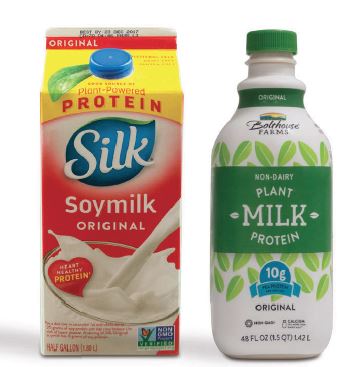
3. Limit added sugar.
A cup of dairy milk has 3 teaspoons (12 grams) of naturally occurring lactose (milk sugar).
Most non-dairy milks naturally have 0 to 2 grams of sugar. Anything more than that is added.
(Some rice and oat milks have as much as 20 grams of sugar, because companies use enzymes to break down their starches into sugars. We counted that sugar as added.)
Who needs it? Plenty of unsweetened non-dairy milks taste good.
Don’t like unsweetened? Most sweetened “original” non-dairy milks have just 1 to 1½ teaspoons of added sugar—far less than most vanillas (1½ to 3 teaspoons) or chocolates (3 to 5 teaspoons). Our added-sugar limit for a Best Bite is five grams (about a teaspoon).
Tip: Check the label. Blue Diamond Almond Breeze Hint of Honey Vanilla has 2 teaspoons of added sugar per cup. Pacific’s “lightly sweetened” Vanilla Hemp milk has 4 teaspoons per cup. You call that lightly?
4. Get healthy fats.
If you drink dairy milk, stick with 1% or fat-free to limit saturated fat. For non-dairy, don’t worry about the fat in nuts, seeds, and soy. It’s the healthier, unsaturated kind. Just avoid coconut milk.
5. Skip rice milk.
Arsenic is a human carcinogen, and rice soaks it up from soil and water. A half cup of rice milk could put an adult at the daily arsenic limit set by Consumer Reports. (Kids under 5 shouldn’t drink rice milk daily.) Our Best Bites and Honorable Mentions have no rice or rice syrup.
Click here for a chart that compares that nutrients in Best Bites, Honorable Mentions, and other non-dairy milks.
Should you buy milk with extra calcium?
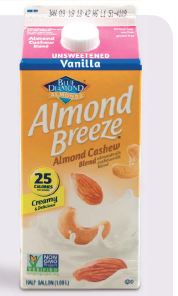
“50% more calcium than dairy milk,” boast many non-dairy milk cartons. But more isn’t necessarily better. Calcium doesn’t cause heart attacks, but getting too much from supplements or fortified foods may raise the risk of kidney stones, hip fractures, and prostate cancer.
Shoot for 1,000 milligrams a day (1,200 mg for women over 50 and men over 70). That includes what you get from food and supplements. Count roughly 250 mg for each serving of dairy you eat (150 mg for greek yogurt), and add 250 mg for the rest of your diet.
Should you buy nuttier nut milks?
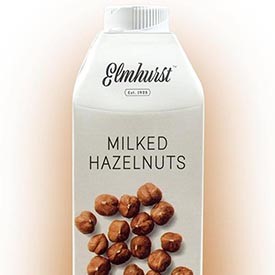
Most almond milks have no more than 4 to 6 nuts per cup. (That’s why they’re low in calories and protein.) Now you can get more nuts (17 or 18) and more protein.
The downside: the extra-nut milks we found don’t add calcium or vitamin D...and have more calories (typically 130 to 150) than regular nut milks.
Dream Ultimate Almond has “4 times more almonds.” The nuts supply 5 grams of protein. Ditto for Elmhurst Milked Almonds. Extra nuts also mean 3 to 6 grams of protein in Elmhurst Milked Cashews, Milked Hazelnuts, Milked Walnuts, and Milked Peanuts.
Should you go for more nuts? Yes, if you’re looking for a creamier milk that’s made with unsaturated fat. But you still get more protein for your calorie buck with pea protein milk.
Why pea protein milk comes close to dairy
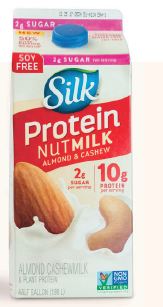
Your best shot at a non-dairy milk that tastes like Bessie made it: pea protein. Silk came the closest, just beating out Bolthouse.
■ Silk Protein Nutmilk. The creamy mix of pea protein with almond milk and cashew milk yields 10 grams of protein per cup. The regular (130 calories and just ½ teaspoon of added sugar) is a Best Bite.
■ Bolthouse Farms Plant Protein Milk. The Unsweetened (90 calories) and Original (110 calories and 1 teaspoon of added sugar) each has 10 grams of protein from peas. Both are Best Bites.
■ Ripple. The Unsweetened Original (70 calories) and Unsweetened Vanilla (80 calories) are Best Bites, but our tasters preferred the 100-calorie (sweetened) Original, which missed our added sugar limit by just 1 gram. All have 8 grams of protein.
Which "free" claims matter
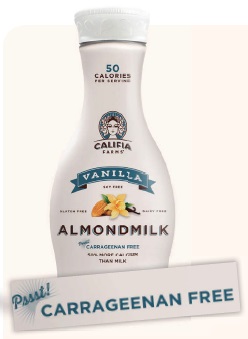
“Dairy-free,” say many non-dairy milk cartons. (Duh!) Are other “free” claims more helpful?
■ Cholesterol-free. Any milk made from plants (soy, nuts, grains, etc.) has no cholesterol. It also has no lactose (milk sugar).
■ Gluten-free. Most non-dairy milks are naturally gluten-free. But if you need to avoid gluten, always check the label.
■ Carrageenan-free or gum-free. The controversial thickener carrageenan is gone from most non-dairy milks. Some brands, like Forager Project, are also “gum free.” But gums like gellan or locust bean, though not well tested, are probably safe for most people (see chemicalcuisine.org).
Don't bother buying coconut milk for its medium-chain fats
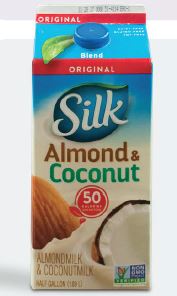
What’s fueling the coconut craze? It’s partly due to medium-chain fatty acids (MCFAs), which “[help] to support metabolism,” according to the Trader Joe’s coconut milk cartons.
In one good study, dieters given 18 to 24 grams of MCFAs a day for four months lost about 3½ more pounds than dieters given olive oil.
But you’d have to drink 26 to 38 cups a day of coconut milk to get as much MCFAs as those dieters got. And each cup has 45 to 90 calories. So much for a magic weight-loss bullet.
And so much for your arteries, which have to deal with coconut milk’s cholesterol-raising longer-chain saturated fatty acids. Like coconut? Silk and Blue Diamond almond-coconut blends cut the sat fat to just 1 gram.
Photos: © luigi giordano/fotolia.com (top), © Leah Ettman/CSPI (Bolthouse Plant Protein), © Califia Farms (Califia Farms Almondmilk), © Lindsay Moyer/CSPI (all others).
Continue reading this article with a NutritionAction subscription
Already a subscriber? Log in

